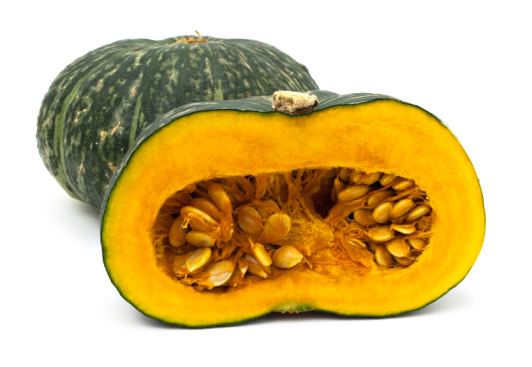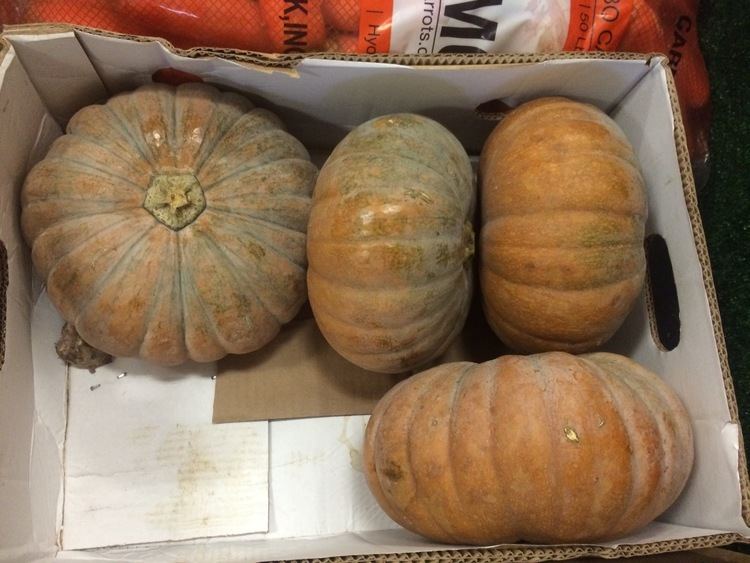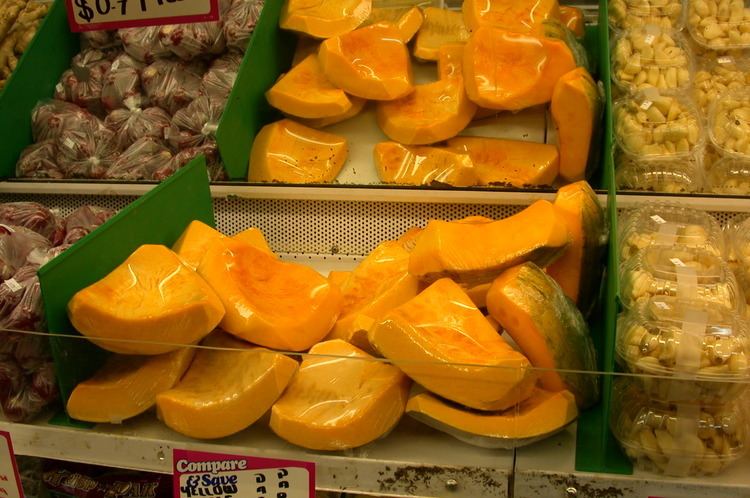 | ||
Representative species Field pumpkin, Winter squash, Figleaf Gourd, Cucurbita argyrosperma, Crookneck pumpkin Similar Custard, Common Bean, Pumpkin, Asado, Chayote | ||
Calabaza (West Indian pumpkin) is "a large winter squash (Cucurbita moschata) that resembles a pumpkin and is typically grown in the West Indies and tropical America." The term is also used loosely for a variety of gourds from Africa, the Americas, and the Caribbean.
Contents

The word calabaza is derived from the Persian term for melon (kharbuz). The French term calabasse, and hence the English "calabash", is based on the older Spanish. In common use, "calabash" refers to a gourd native to the African continent, while "calabaza" refers to a gourd native to the Americas. In North America, the word "calabaza" refers to any of several species of tropical gourds of the genus Cucurbita. Two common species, the first one native to the Caribbean, are C. moschata and C. maxima. The widespread species C. foetidissima specifically identifies "calabaza" as one of its common names. The Spanish calabacera frasco [literal translation; bottle-shaped gourd] refers specifically to C. foetidissima. Local names for "large green or yellow gourds" include auyama (Venezuela, Colombia), ayote (Central America), abóbora (Brazil), and zapallo in much of South America.

How To Grow West Indian Pumpkins (Caribbean Calabaza)
History

First cultivated for food in Mesoamerica, it is one of the "three sisters" of squash, maize, and climbing beans (typically tepary beans or common beans). From Mesoamerica, it is believed to have spread to other regions by Spanish colonial influence. C. maxima and C. moschata, in particular, are well known in the Philippines under the name kalabasa.
Cultivars

Cultivated species produce gourds in a variety of shapes. However, all are creeping, annual tropical vines with large-lobed leaves and branching tendrils. The skin color reflects hybrids, varying from dark green to light yellow. The flesh can also vary in color, but most common is bright orange or yellow. Varieties differ somewhat in taste and texture, but are generally slightly sweet with a firm but soft texture. Farmers' markets in South America offer varieties of calabaza in a fashion similar to the variety of apples that might be present in a North American market.
Uses
It is eaten many different ways, such as in stews, cakes, and candies. Some recipes that call for pumpkin allow calabaza to be used in its place. The taste is smooth and somewhat sweet. Calabaza is a good source of beta-carotene, some of which can be converted into vitamin A.
The flower (squash blossom, flor de calabaza), is used as an ingredient in quesadillas, empanadas and other dishes in Mexican cuisine and New Mexican cuisine, and in pupusas in Salvadoran cuisine.
The seeds, toasted and seasoned, known as pepitas, are a common snack.
